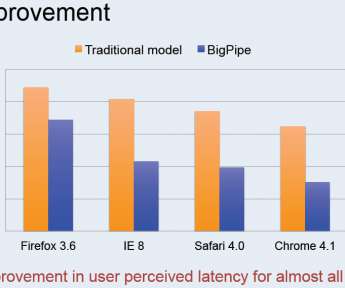The not so good web performance tips
Jos
DECEMBER 28, 2010
Yesterday I was reading Zakas’ Performance on the Yahoo! Homepage slideshare presentation , and I got very surprised when I saw that Yahoo had realised that two of the wide accepted tips for improving website performance had not work so well for them. 1) Put scripts at the bottom (slide 37) Or at least that is what Yahoo recommends , and it contributes as one of the indicators to calculate YSlow score.































Let's personalize your content